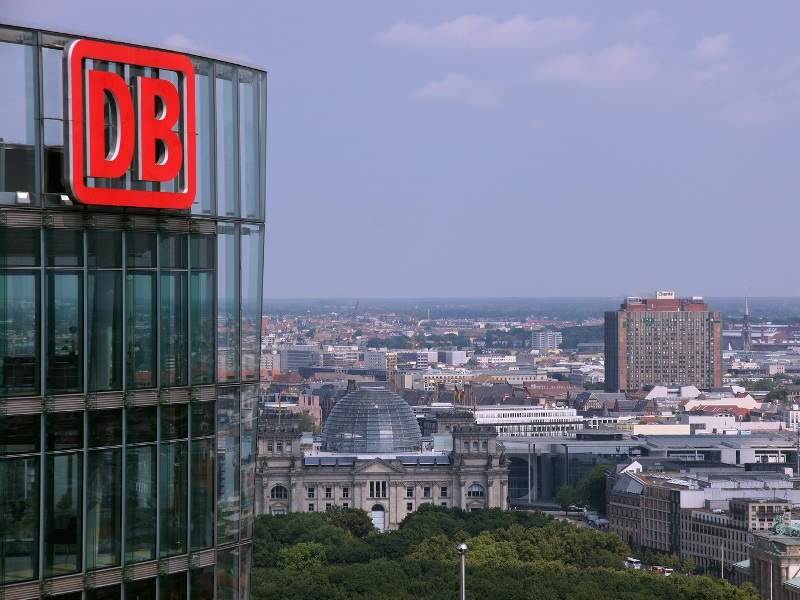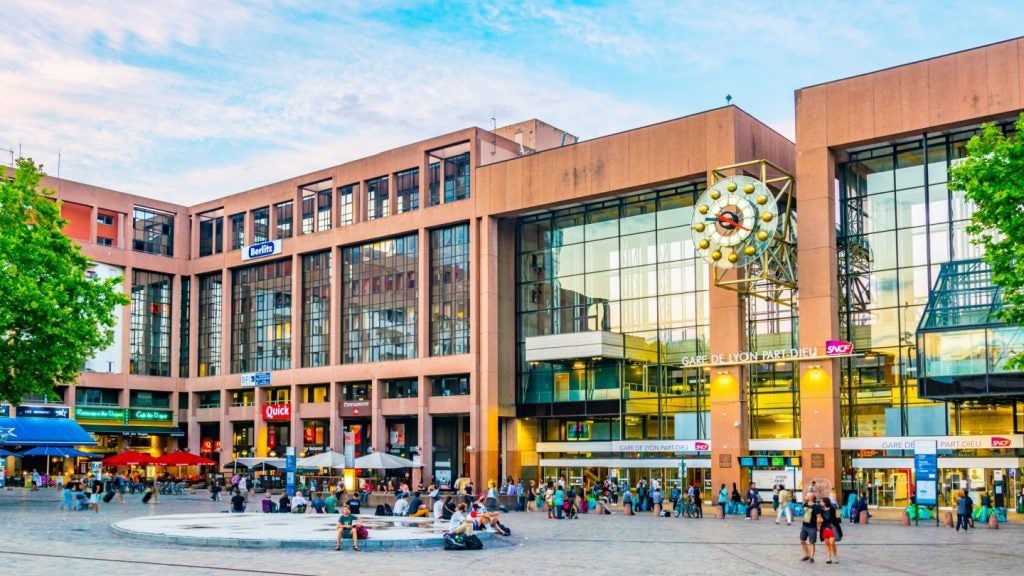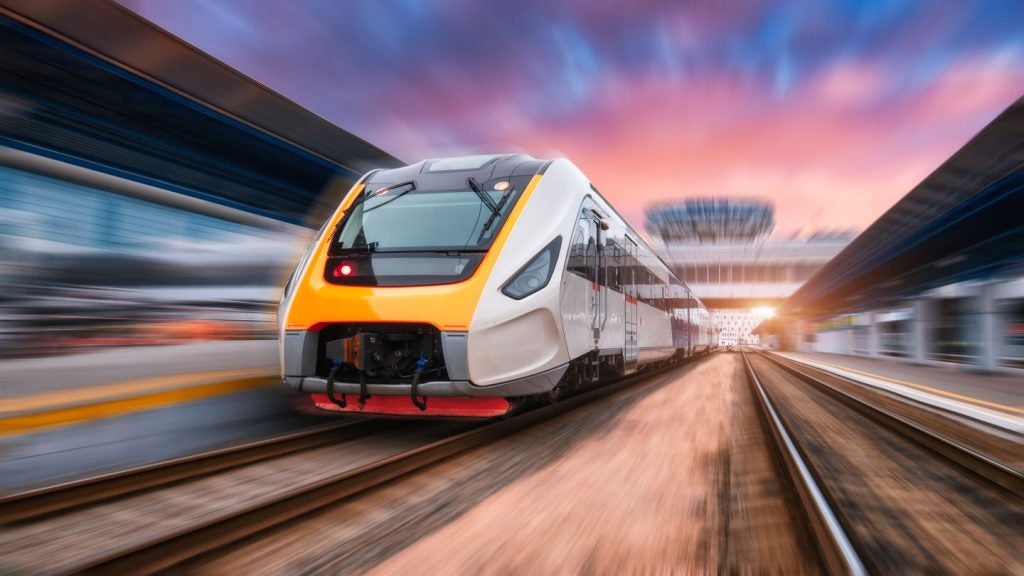
Deutsche Bahn – $51.14bn
Deutsche Bahn (DB) reported a 5.2% year-on-year revenue growth in 2017 on the back of improved performance of its business units, including DB Long Distance, DB Netze Track, DB Schenker Logistics, and DB Arriva plc. Ridership for DB Long Distance trains grew by 2.3% year-on-year to 142 million, while rail freight transport decreased by 2.3% to 271 million tonnes (Mt) during 2017.
Based in Berlin, Germany, Deutsche Bahn provides mobility and logistics services to its customers. The company has a presence in more than 130 countries and a workforce of 310,000. It operates a 33,488km-long rail network with 5,700 train stations and transports seven million passengers a day.
DB’s business units also include DB Regional, DB Cargo, DB Netze Stations, and DB Netze Energy. DB Cargo and DB Schenker transported roughly 80,000 standard containers on the world’s longest railway route between Germany and China for the first time in 2017. DB commissioned a new high-speed rail line between Berlin and Munich in December 2017.
SNCF – $40.12bn
French state-owned railway company SNCF’s revenues increased by 4.2% year-on-year in 2017 due to a strong growth in its passenger and freight transport volumes. The company invested approximately $10.5bn in the modernisation of its rail network and rolling stock, mainly in France, during the year. It also completed 1,600 improvement projects in 2017.
SNCF employs 270,000 people in 120 countries and operates more than 30,000km of the railway network, including 2,600km of high-speed lines with a fleet of 15,000 trains. The company serves approximately 14 million customers and 170,000 shippers globally.
The SNCF Group consists of three public establishments, including SNCF, SNCF Réseau, and SNCF Mobilités. It operates through six major businesses, including SNCF Network, SNCF Stations & Connections, Keolis, and SNCF Real Estate.
How well do you really know your competitors?
Access the most comprehensive Company Profiles on the market, powered by GlobalData. Save hours of research. Gain competitive edge.

Thank you!
Your download email will arrive shortly
Not ready to buy yet? Download a free sample
We are confident about the unique quality of our Company Profiles. However, we want you to make the most beneficial decision for your business, so we offer a free sample that you can download by submitting the below form
By GlobalDataJSC Russian Railways – $39.04bn
JSC Russian Railways witnessed a 5.6% growth year-on-year in revenue in 2017 as a result of a 9.5% increase in revenues from its freight and infrastructure operations. Passenger traffic rose by 7.8% to 1.11 billion during the year, while cargo volumes grew by 3.2% to 1.261 billion tonnes.
Russian Railways operates in more than 40 countries across approximately 85,000km of railway lines and transports nearly one billion passengers and two billion tonnes of cargo a year. The workforce of the company is roughly 750,000.
The company has five operating segments, including RZD cargo, long-distance passenger, auxiliary operations, subsidiaries cargo, and logistics services of Gefco Group. It sold a 51% equity stake in Terminal LLC and 57% in CJSC Transkat for $16.2m and $4.5m respectively in December 2017. The company signed an agreement to construct the 410km-long Elegest-Kyzyl-Kuragino railway line in the Republic of Tyva in June 2017.
Indian Railways – $28.8bn
Indian Railways’ revenues rose to $28.8bn, 13.38% up compared to $25.4bn in 2016, due to growth in revenues in the passenger segment. It carried 8.26 billion passengers and 1.16 billion tonnes of freight during the year.
Headquartered in New Delhi, the state-owned Indian Railways operates a 67,368km-long rail network with a workforce of 1.54 million and runs approximately 11,000 trains a day. It is divided into 17 zones, which are further divided into a total of 68 operating divisions.
India’s first semi-high speed fully air-conditioned train called Tejas Express was inaugurated between Mumbai and Karmali in May 2017. Indian Railways commissioned a record electric traction of 2,367km of train service within the year and is currently building a $14.52bn Ahmedabad-Mumbai high-speed passenger corridor project.
East Japan Railway Company (JR East) – $27.76bn
East Japan Railway Company (JR East) posted a revenue growth of 2.4% year-on-year, driven by a 1.6% year-on-year increase in its transportation business segment revenue. The company’s traffic volume amounted to 136,486 million passenger kilometres in 2017.
Based in Shibuya, Tokyo, JR East operates through four business segments, namely transportation, retail and services, as well as real estate and hotels. The transportation segment provides railway and bus transport services. It runs 6,263.1km of conventional lines and 1,194.2km of Shinkansen high-speed rail lines.
JR East began the TRAIN SUITE SHIKI-SHIMA cruise train service in May 2017, with an aim to promote tourism in the region. The company, together with Mitsui & Co Ltd and Abellio UK, was selected as the winning bidder by the UK Department for Transport to operate the West Midlands passenger rail franchise in the UK in December 2017.
BNSF Railway – $21.38bn
BNSF Railway’s revenues increased by 8% year-on-year in 2017 with a 5% rise in its business volumes, which totalled 10.277 million. Consumer Product and Coal volumes each grew by 6% year-on-year, while Industrial Product volumes saw a year-on-year growth of 5% during the year. The transport volumes of agricultural products business unit were relatively flat.
Based in Fort Worth, Texas, BNSF is one of the biggest freight transportation companies in North America. It operates a 52,303.6km route covering 28 states in the US and three Canadian provinces and runs a total of 25 intermodal facilities. It has an employee base of 41,000 people.
The company opened its new $20m Network Operations Center (NOC) in Fort Worth in 2017. Its $3.3bn capital investment in 2017 focused on the addition of 32km of double tracks, 250 bridge projects, and development of 418km of under-centralised traffic control.
Union Pacific Corporation – $21.24bn
Union Pacific Corporation reported a 7% year-on-year revenue growth compared to the previous year as a result of volume growth in its six commodity groups. Industrial products accounted for 21% of the company’s freight revenue, while intermodal and agricultural products accounted for 19% each, followed by chemicals with 18%. Coal and automotive units contributed 13% and 10% respectively to the company’s revenues.
Union Pacific, with its principal operating company Union Pacific Railroad Company, operates 8,573 locomotives on a 51,695km network covering 23 states. Headquartered in Omaha, Nebraska, US, the company serves 10,000 customers with a workforce of 41,992.
The company’s capital expenditure during 2017 totalled $3.1bn. It commenced construction on Brazos Yard railway yard in Robertson County, Texas, US, with an investment of $550m in January 2018. The rail yard will be able to switch up to 1,300 railway vehicles a day when completed in 2020.
Central Japan Railway Company – $17.14bn
Central Japan Railway Company (JR Central) witnessed a year-on-year revenue growth of 3.7%, primarily driven by its transportation business. The company carried 452,000 passengers a day on its Tokaido Shinkansen service in 2017.
Based in Nagoya, Japan, JR Central is mainly involved in providing passengers with reliable rail transportation services. The company employed 28,867 people as of March 2018.
The company’s business segments include transport, merchandise, real estate, reconciliations, among others. JR Central increased the frequency of trains such as Shinano and Hida to meet the growing passenger demand in 2017.
West Japan Railway Company (JR-West) – $14.12bn
West Japan Railway Company (JR-West) posted a 4.1% year-on-year revenue growth, backed by a 2.1% increase in transportation revenues. The company’s passenger kilometres increased by 1.8% to 59,291 million during the year.
Headquartered in Osaka, Japan, JR-West operates 5,008.7km of rail network covering 16 counties and two provinces. The company runs 6,562 vehicles covering 1,200 stations.
JR-West’s business segments include transportation operations, retail, and real estate. The company began operations of the Twilight Express Mizukaze sleeper train in June 2017 and launched the Smart EX service for foreign visitors to Japan in September 2017.
CSX Corporation – $11.4bn
CSX Corporation’s revenues increased by 3% year-on-year due to rise in coal shipments and price increases across its business segments. Merchandise segment generated 62% of the company’s total revenue, while coal and intermodal businesses accounted for 18% and 16% respectively.
CSX’s principal operating subsidiary, CSX Transportation, Inc., is involved in providing rail-based freight transportation services through its 33,796km rail network. It operates in 23 states east of the Mississippi River and the District of Columbia, as well as Canada’s Ontario and Quebec provinces. Headquartered in Jacksonville, Florida, the company employs a workforce of approximately 24,000 as of the end of 2017.
CSX’s expenses increased 1% year-on-year to $7.7bn in 2017. Its merchandise and coal shipments amounted to 2.7 million and 855,000 carloads respectively. Domestic intermodal freight volume declined by 2%, while international intermodal freight increased by 7% during the year.





